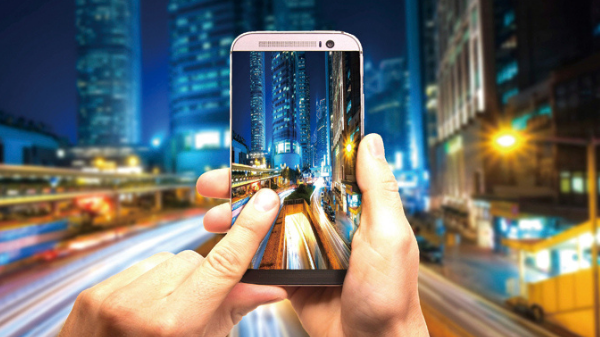Mobile phones and other electronic devices used by people all the time can pose little-known health hazards
Blue light is also helpful in the workplace and is credited for resolving various health issues and a much higher level of productivity and results. Certain studies have also claimed improvements in the treatment of facial acne upon exposure to a LED emitted at 414nm. A combination of red and blue lights is also said to be employed more and more in clinical dermatologic therapies.
“Some studies claim blue and red lights are being used more and more to address dermalogic issues”
However, Prolonged exposure to this artificial blue light, notably those emitted by strong LED lights or mobile electronic devices, can cause alarming side effects. While the benefits of this short-wavelength light are well documented, there is also a growing body of evidence that points to the potential health hazards of this artificial light.
Surveys have shown that many adults, who regularly use electronic devices with illuminated displays, report, or complain of various symptoms of visual fatigue, such as impaired vision, dry and irritated eyes, and even headaches. Meanwhile, contact with harmful blue light between 380 and 450nm is said to cause age-related macular degeneration. Over time, retinal cells can become irreversibly damaged, a common occurrence in industrial countries that can result in blindness.
No matter one’s stature in life or the nature of activities that a person engages in, he or she is bound to come across blue light in daily life since it is virtually everywhere. Changes in lifestyles are unwitting culprits in prolonged exposure to this artificial light. In addition to the natural rays from the sun, many people are constantly exposed to this type of short-wavelength light as lifestyle involves more and more use of smartphones, laptops, TV sets, and other electronic devices for prolonged periods of time.
” Changes in lifestyles are unwitting culprits in prolonged exposures to harmful artificial blue light”
Despite these health risks, there are no reasons, though, to be alarmed at this stage as precautionary or remedial measures are readily and easily available that can be employed to blunt or eliminate blue light’s potential negative impacts. Wearing safety glasses that reduce harmful blue light is recommended at workplaces with electronic screens. Actively reducing the volume of artificial blue light emitted by electronic devices with a blue light filter app or avoiding the use of devices at bedtime can go a long way in preventing adverse health hazards of excessive exposure to blue light.
While blue light poses potential health risks, the most judicious and safest route to take – just like with cancer and other health hazards – is to determine and employ the most sensible precautionary measures, specifically to stay away to the extent possible from an identified hazard and reduce or even avoid prolonged exposure to anything and everything that can cause harm.








